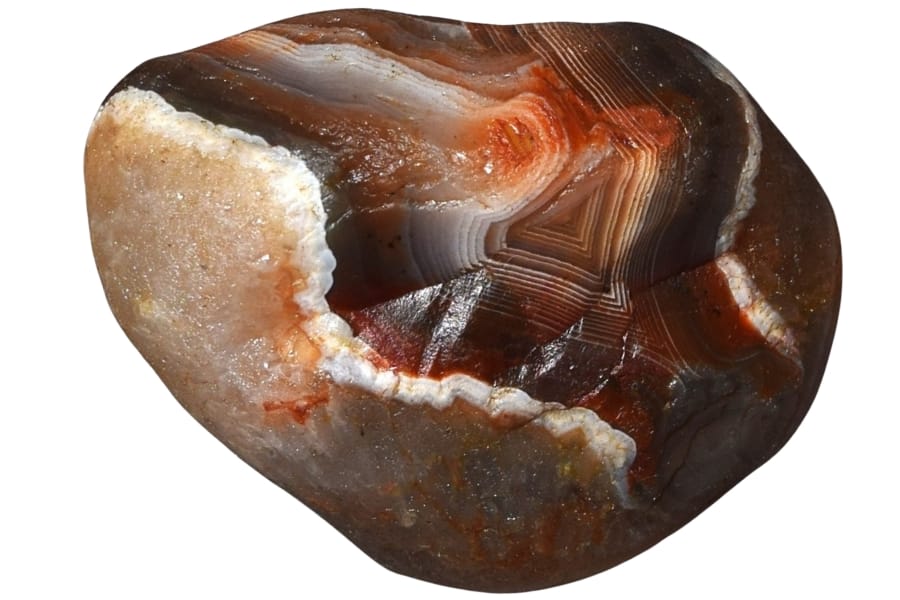Agates are semiprecious stones that are very good at hiding. They look like regular rocks, which makes them very hard to find.
Looking for agates in Rhode Island can be like looking for lost treasure. It’s much harder if you don’t have a map or a good guide.
But when you do find an agate, it’s truly magical. Each is unique; they’re all swirls of color and patterns that move when they catch the light just right. They are stone-sized pictures of the stunning beauty that nature can make.
Lucky for you, we’ve been on all the adventures, learned from our mistakes, and found the locations to find agates in Rhode Island. We’ve learned the tricks and discovered the best places for you to spot these beauties!
What is Rhode Island Agate?
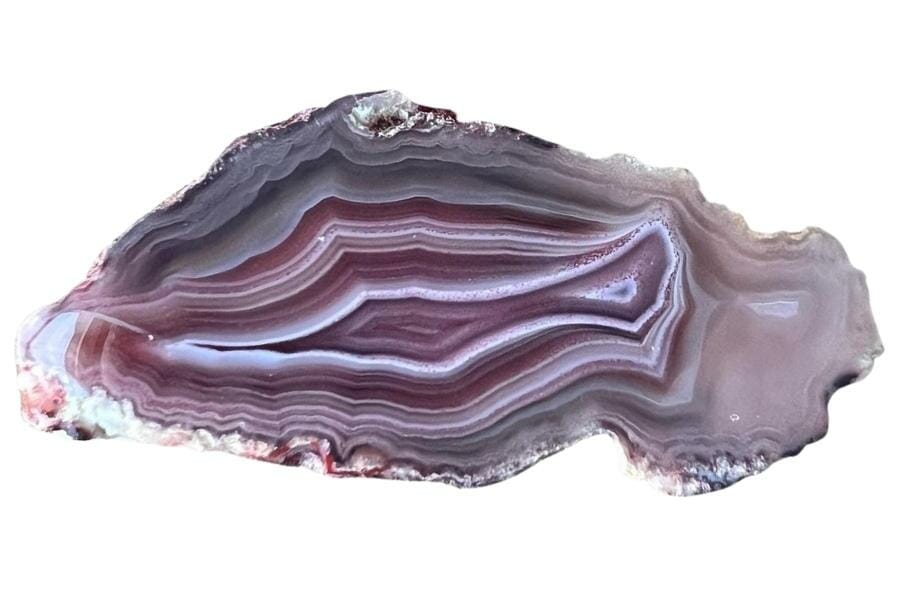
Agate is a cool rock that forms when layers of tiny quartz crystals stick together. These rocks aren’t like other rocks; they have different colors and patterns that make each one unique.
You’ll often find them in places with rocks formed by volcanoes or where there used to be a lot of volcanic activity. They can also be found in riverbeds where water has flowed for a long time, making the rocks tumble and smooth over time.
Amazingly, agates often form in rock holes, filling them like water in a bucket. Those cool bands of color we all love are made by different minerals seeping in over millions of years.
When looking for something, check out old volcanic areas or rivers. Remember that they can hide among ordinary pebbles, so keep your eyes open!
Read this to find out more about how much agates are worth.
Moss agates
Moss agates are beautiful works of nature but are unlike other agates because they don’t have a well-known banding pattern. The fantastic things inside these stones make them look like mossy trees or plants.
While the agate is being formed, bits of minerals like iron or manganese get stuck inside and make these green patterns that look like moss. But it’s not moss!
These stones are unique because they have earthy, forest-like scenes carved into them. This is a significant natural effect. Each is like holding a small, old forest in your hand, making them popular with collectors and nature lovers.
Unfortunately, it can be hard to find moss agates in Rhode Island. It’s not typical for agates to be found in places with volcanic soil. It’s not possible, though!
Fire agates
Like opals, fire agates are known for their stunning iridescent colors, making them look like tiny galaxies inside a stone. The iron oxide or limonite layers inside the agate give it a unique look by reflecting light and making it look like it has flames or swirls of different colors.
Fire agates are different from other agates because they have fiery bands of color and light that sparkle. They are very popular with rock fans. These beautiful stones are formed in volcanic areas or places with hot springs.
Over millions of years, silica and iron oxide layers build up in the cracks of rocks, making these exquisite stones.
In Rhode Island, though, the chances of stumbling upon a fire agate are slim.
Blue lace agates
Blue lace agate is a beautiful stone known for its delicate patterns that resemble wispy, lace-like swirls. It’s unique because of its soft blue colors, often surrounded by white or lighter lines.
This gives it a peaceful, calming look, making it very popular for jewelry and healing. These beautiful rocks are a type of chalcedony that forms in volcanic areas or places with a lot of tectonic activity.
Over millions of years, mineral-rich water seeps into rock cavities and slowly evaporates. As the water evaporates, it leaves silica deposits that form the unique banded patterns of blue lace agate.
However, if you’re in Rhode Island hoping to pick up a blue lace agate on your next hike, you might not be in luck.
The key factors in our recommendations are:
- The deep experience and understanding of our team about the area
- Recommendations from local groups and clubs
- How easy it is to get the a particular location
- Safety and potential hazards when collecting
- Weighing private and public locations
- The ability for both experienced and novice agate enthusiasts to find great samples
With these factors in mind we’ve been able to put together a fantastic list that just about anyone can use!
DON'T MISS OUT ON ANY GREAT FINDS!
While you're out searching for Agates you're going to find A LOT of other interesting rocks and minerals along the way. The last thing you want to do is toss out something really interesting or valuable. It can be easy to misidentify things without a little guidance.
We've put together a fantastic field guide that makes identifying 140 of the most interesting and valuable rocks and minerals you will find REALLY EASY. It's simple to use, really durable, and will allow you to identify just about any rock and mineral you come across. Make sure you bring it along on your hunt!
The Best Spots To Find Agates in Rhode Island
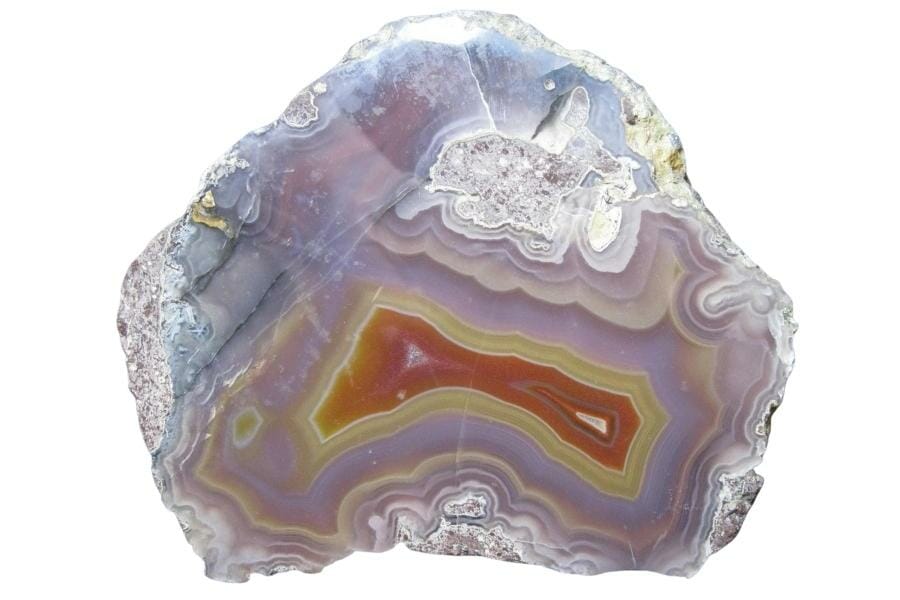
Rhode Island is a great place to find agates because of its rough terrain. There are many excellent locations where you can find gems in Rhode Island, but not all contain agates. We’ll show you where to start looking for them!
Always Confirm Access and Collection Rules!
Before heading out to any of the locations on our list you need to confirm access requirements and collection rules for both public and private locations directly with the location. We haven’t personally verified every location and the access requirements and collection rules often change without notice.
Many of the locations we mention will not allow collecting but are still great places for those who love to find beautiful rocks and minerals in the wild without keeping them. We also can’t guarantee you will find anything in these locations since they are constantly changing.
Always get updated information directly from the source ahead of time to ensure responsible rockhounding. If you want even more current options it’s always a good idea to contact local rock and mineral clubs and groups
Calumet Hill

Calumet Hill is a lesser-known gem in Rhode Island that is a geological treasure trove for people who love agates.
Agates and other minerals, like quartz, were formed by geological processes in this area long ago, away from the main tourist routes.
Glaciers moving during the last ice age formed the hill’s rocky surface. It has a variety of stones, sediments, and maybe even beautiful agates hidden below.
The site is more than just the stones; it’s also a beautiful place with many plants that make for a peaceful day of exploring. Whether you’re a beginner rockhound or a seasoned geologist, Calumet Hill is exciting because you might find agates in the glacial deposits.
Where we found agates at Calumet Hill
For people looking for agate, Calumet Hill stands out because it has gravel deposits and sedimentary formations that are left over from glacial erratics and meltwater channels.
Glaciers often bring agates here from far away because the conditions are perfect for trapping and making them.
Dyer Island
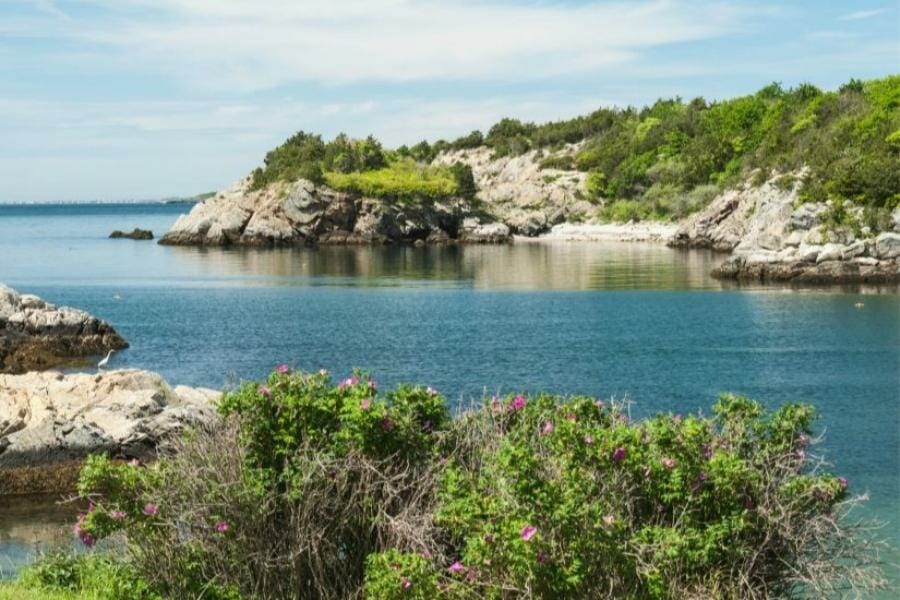
Even though it’s not well known, Rhode Island’s Dyer Island could be a fun place for people who like agates and geology.
This small piece of land off the state’s coast is part of a region shaped by thousands of years of geological activity, including the powerful glacial periods. It’s an interesting but challenging place to look for minerals.
The island’s main draw is its wide range of geological features. Since it’s near the water, water and wind have affected it, which can reveal geological treasures that were thought to be hidden.
Dyer Island may not be a well-known place to find agates, but its unique landscape makes it fun to explore and there’s a chance of finding something unexpectedly geological.
This makes it a worthwhile adventure for people interested in nature’s mysteries.
Where we found agates at Dyer Island
Larger rocks can be worn down by the waves over time, revealing agates that are hidden inside. Glaciers may have brought agates to the island along with other rocks.
Mount Hope Bay
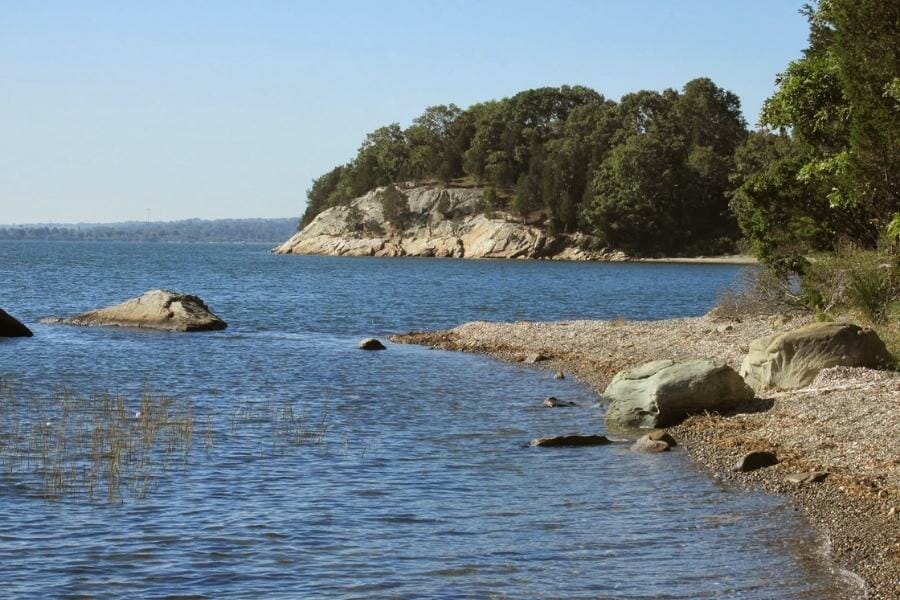
Mount Hope Bay spans the border between Rhode Island and Massachusetts. It’s a beautiful place to look for geological wonders like agates.
With its long maritime history, this tidal estuary is more than just a beautiful place to relax; it’s also a window into how rocks formed in the past.
Rockhounds love Mount Hope Bay because glaciers formed it in the past. During the Ice Age, glaciers scraped and collected rocks and minerals from the areas they went through, possibly including agates.
They dumped these rocks and minerals in the bay area as they melted. Over time, the water currents have also affected these stones by rolling and smoothing them, sometimes revealing what was hidden beneath.
Here, looking for agates isn’t so much about being sure of a find but more about the thrill of discovering a beautiful natural setting.
Where we found agates at Mount Hope Bay
The bay’s shoreline comprises different rocks and sediments, some of which may be agates. It was formed by the rise and fall of glaciers.
Narragansett Bay

Rhode Island’s geological crown jewel is Narragansett Bay, a large bay filled with islands. With its rich history and abundant sea life, this bay is more than just a pretty place to look at the scenery.
It’s also a haven for collectors looking for rare items like agates. Its long shoreline, shaped by glaciers in the past, is a mosaic of different rocks and sediments, which may contain valuable agates.
Glaciers that used to cover this area weren’t just vast sheets of ice; they were like natural conveyor belts that brought rocks and minerals from far away.
As these glaciers melted, they left the bay with many geological treasures, and agates could be one of them.
Where we found agates at Narragansett Bay
The state’s glacial history means that rocks, including agates, could have been transported by glaciers from other areas and deposited in local riverbeds and coastlines.
Pawtuxet River
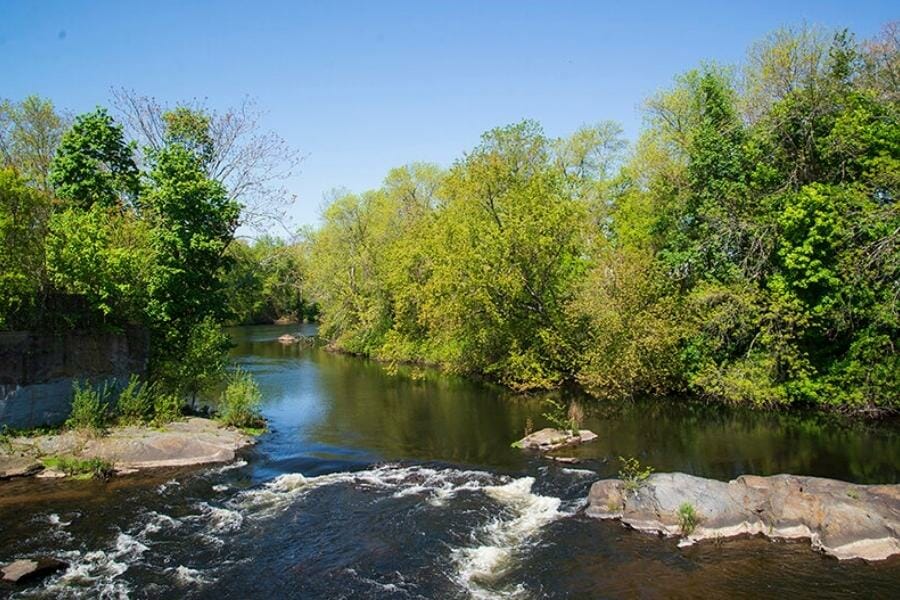
The Pawtuxet River runs through the middle of Rhode Island. It’s an important waterway and a possible paradise for rockhounds.
They were formed by years of water flow and glacial activity in the past. This river, its tributaries, and the landscapes around it make it a peaceful yet exciting place to look for geological treasures in nature.
Agates are formed in rocks that were created by volcanoes or metamorphic rocks. They are often moved long distances by water or glacial movements, which the history of the Pawtuxet River suggests may have helped them get there.
Even though the Pawtuxet isn’t known for agate finds, its varied geology suggests it could be possible.
Where we found agates at Pawtuxet River
Its banks and riverbed are home to many kinds of stones and minerals, possibly even hard-to-find agates.
The river’s banks and shallow areas might be your best bet, especially after heavy rains or when new stones are exposed in times of low water.
Other Great Places To Find Agates in Rhode Island
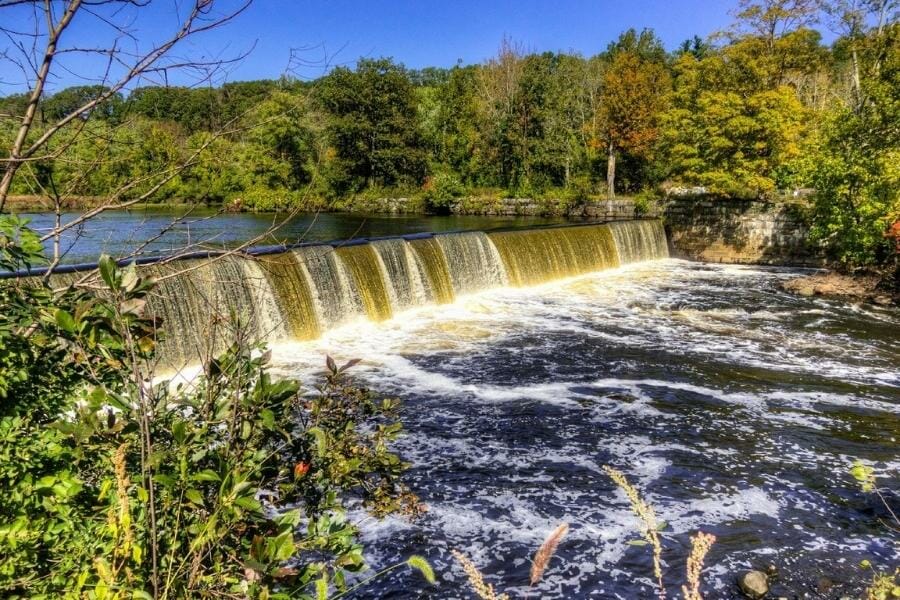
Rockhounds can find remarkable rocks in all of Rhode Island’s different landscapes. Even though we already told you about some great places to visit, here are some more ideas to help you do well!
This county-by-county guide will help you find the state’s best-kept secrets.
Our recommendations by county
| County | Location |
| Providence | Cumberland Hill area quarries |
| Providence | Diamond Hill area quarries |
| Providence | Limerock, Conklin Lime Company Quarry |
| Providence | Pawtuxet area beach gravels |
Additional areas you can find agates
You can find agates in the places listed below. Rhode Island is vast, so let us help you find these.
Beaches
For agate collectors, beaches are great places to go because the constant rise and fall of the tides creates a naturally curated collection of rocks and minerals. Agates are formed in volcanic rock or old lava flows.
They usually get to the coast by rivers that cut through volcanic deposits or by erosion of cliffs along the shore that are made up of rocks that contain agates. If these agates get to the ocean, they will naturally tumble.
The ocean’s constant movement rounds and smooths these stones until they end up on beaches in a better condition than you might find in the middle of the land.
Quarries
Agate collectors love quarries because they reveal geological history layers normally buried deep below the earth’s surface.
When mining industrial minerals, these large excavations make it possible to reach agate-bearing layers that would not be reachable any other way.
Agates are known to form in the cracks of volcanic rocks or old lava flows, and they could be hidden inside these layers, waiting to be found.
As a collector, you can focus your exploration in quarries, where the shaking of the earth during industrial excavation can reveal agates and other geological treasures.
Streams and creeks
Streams and creeks are great places for agate collectors because they are natural ways for these stones to get to other places.
Where agates come from is volcanic areas, and waterways carry these geological treasures from where they were found to places that geology fans can easily reach.
Agates’ journey starts when erosion breaks them free from their volcanic hosts. Streams and creeks then carry them long distances, sometimes very far.
When it rains a lot, the water level rises, which stirs up the stream beds and may reveal new species. Low-water times are also good because they let you see more of the streambed.
Common Agate-Hunting Questions
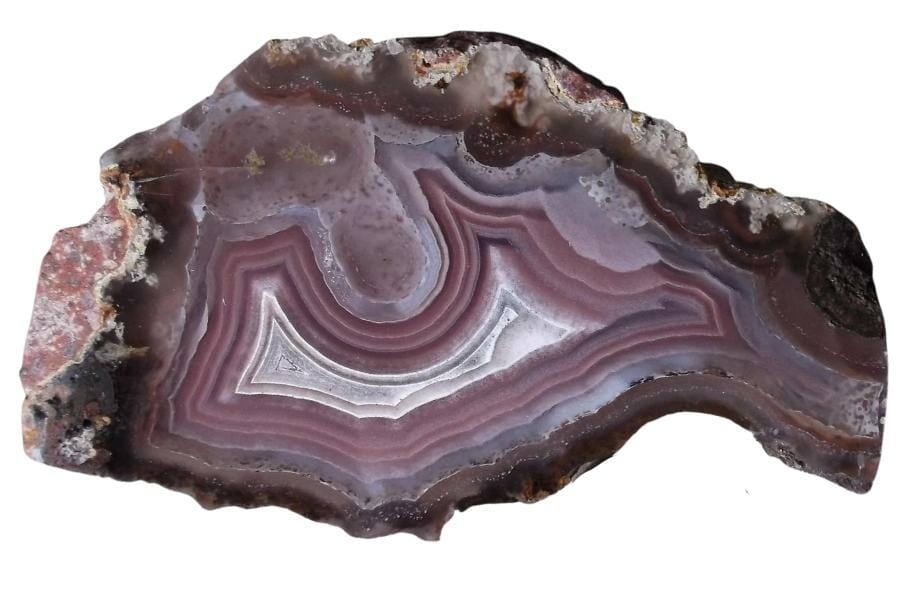
Most people who go to Rhode Island to look for agates ask this.
Is it illegal to collect agate in Rhode Island?
In Rhode Island, no laws say you can’t collect agates, but people who do so must follow specific rules to ensure they do it morally and legally.
The Best Places To Buy Agates In Rhode Island

Some people don’t like going outside in the heat to look for agates. You might only need one to give as a gift or get for yourself. These rock shops in Rhode Island sell agates that can be found in the state:
- Apple Valley Minerals – 7 Homestead Ave, Smithfield, RI 02917, United States
- Natural Elements – 435 Thames St, Newport, RI 02840, United States
- Natures the Rock Shop – 416 Metacom Ave, Bristol, RI 02809, United States
- Ruby Rocks LLC – 145A Danielson Pike, Foster, RI 02825, United States
- Third Rock Emporium – 75 Main St, East Greenwich, RI 02818, United States

